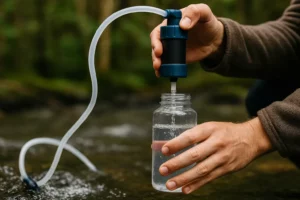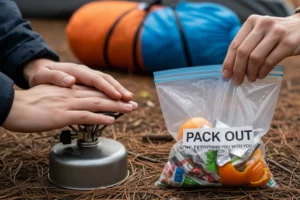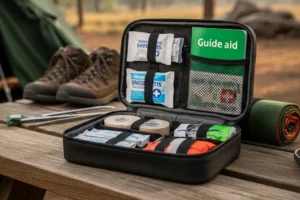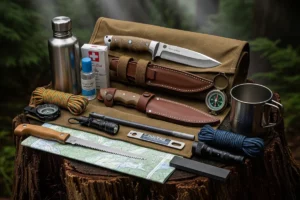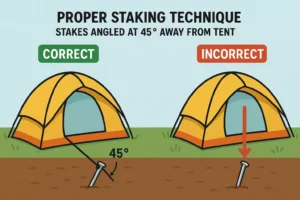The Essential Guide to Wild Camping Rules and Etiquette
Picture this: you’re miles away from the nearest road, surrounded by pristine wilderness, with nothing but the sound of wind through trees and the crackle of your campfire. Wild camping offers an unparalleled connection with nature that traditional campgrounds simply can’t match. However, this freedom comes with significant responsibility. Understanding what are the rules for wild camping, etiquette isn’t just about following regulations—it’s about preserving these wild spaces for future generations while ensuring your own safety and enjoyment.
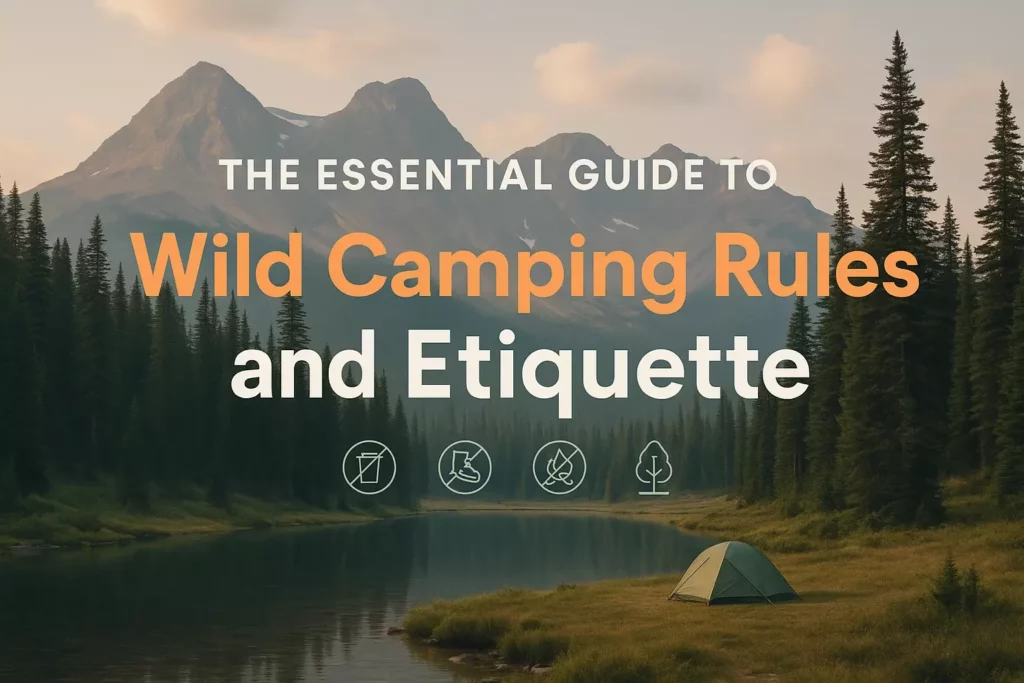
Key Takeaways
- Leave No Trace principles form the foundation of responsible wild camping, ensuring minimal environmental impact
- Legal considerations vary dramatically by location, with some areas prohibiting wild camping entirely while others welcome it
- Safety preparation is crucial, including proper gear, navigation tools, and emergency planning
- Campsite selection should prioritize durability, water access, and minimal environmental disruption
- Respectful behavior toward wildlife, other campers, and local communities is essential for maintaining access to wild camping areas
Understanding Wild Camping Fundamentals
Wild camping, also known as free camping or bush camping, refers to camping in natural areas outside of designated campgrounds or facilities. Unlike traditional camping where amenities like restrooms, water sources, and fire pits are provided, wild camping requires complete self-sufficiency and careful planning.
The appeal of wild camping lies in its authentic outdoor experience. Campers enjoy:
- Complete solitude and privacy
- Stunning natural settings without crowds
- Freedom to explore remote areas
- Cost-effective outdoor adventures
- Deeper connection with nature
However, this freedom demands a thorough understanding of both legal requirements and ethical responsibilities.
Legal Framework: What Are the Rules for Wild Camping?
Country-Specific Regulations
United States: Wild camping legality varies significantly by state and land management agency. Generally permitted on:
- National Forest lands (with restrictions)
- Bureau of Land Management (BLM) areas
- Some state forests and parks
- Private land with permission
Canada: More permissive than the US, with wild camping generally allowed on:
- Crown land (public land)
- National and provincial parks (designated areas)
- Private land with consent
United Kingdom: Highly restricted except in:
- Scotland (Right to Roam laws)
- Dartmoor National Park (specific areas)
- Private land with permission
Europe: Varies dramatically by country, with Scandinavian countries offering the most freedom through “Right to Roam” legislation.
Research Requirements Before Departure
Before embarking on any wild camping adventure, conduct thorough research:
- Contact land management agencies directly
- Check current fire restrictions and seasonal closures
- Obtain required permits or reservations
- Verify access routes and parking regulations
- Review local wildlife guidelines and food storage requirements
Essential Wild Camping Etiquette Principles
The Seven Leave No Trace Principles
1. Plan Ahead and Prepare
- Research regulations and restrictions
- Prepare for extreme weather and emergencies
- Schedule trips to avoid peak times
- Visit in small groups and split larger parties
2. Travel and Camp on Durable Surfaces
- Use established trails and campsites when available
- Camp on rock, gravel, or dry grass
- Avoid fragile areas like meadows and lakeshores
- Keep campsites small and focus activity in areas where vegetation is absent
3. Dispose of Waste Properly
- Pack out all trash, leftover food, and litter
- Deposit solid human waste in catholes 6-8 inches deep, at least 200 feet from water
- Pack out toilet paper and hygiene products
- Strain dishwater and scatter 200 feet from camp
4. Leave What You Find
- Preserve the past by leaving cultural artifacts
- Leave rocks, plants, and natural objects as found
- Avoid introducing non-native species
- Minimize campsite alterations
5. Minimize Campfire Impacts
- Use lightweight stoves for cooking
- Where fires are permitted, use established fire rings
- Keep fires small and burn only dead wood found on the ground
- Burn fires completely to ash and ensure they’re cold before leaving
6. Respect Wildlife
- Observe wildlife from a distance
- Never feed animals
- Protect wildlife and food by storing rations securely
- Control pets at all times
7. Be Considerate of Other Visitors
- Camp away from trails and other visitors
- Keep noise levels down
- Yield trail right of way appropriately
- Take breaks and camp away from trails
Campsite Selection and Setup Guidelines
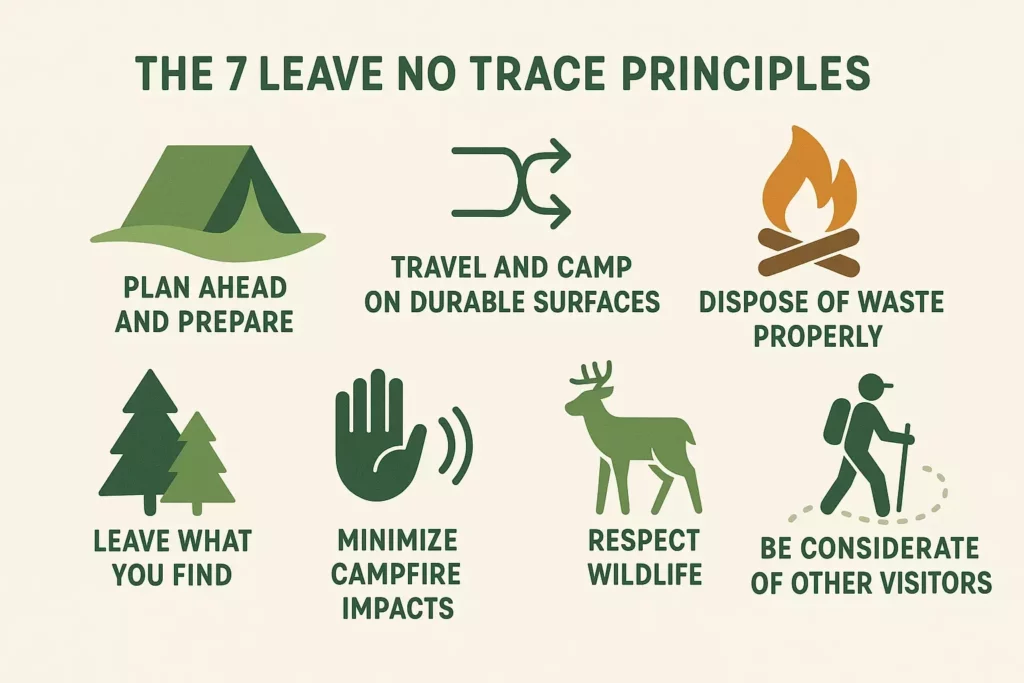
Choosing the Perfect Wild Camping Spot
Distance Requirements:
- 200 feet minimum from water sources to protect riparian areas
- Away from trails to maintain solitude for other hikers
- Below treeline when possible to avoid exposure
- On level ground to ensure comfortable sleep
Surface Considerations:
- Rock or gravel: Most durable, leaves no trace
- Dry grass: Acceptable if vegetation is sparse
- Sand: Good drainage but check local regulations
- Avoid: Wet areas, meadows, fragile vegetation
Natural Shelter Features:
- Trees or rock formations for wind protection
- Natural drainage to avoid water pooling
- Consideration of morning sun exposure
- Protection from potential hazards like falling rocks
Gear Setup Best Practices
When setting up camp, prioritize both comfort and environmental protection. Your tent setup approach should minimize ground impact while maximizing safety and comfort.
Tent Placement:
- Use existing cleared areas when available
- Avoid creating new clearings
- Position tent doors away from prevailing winds
- Consider morning sun for natural warming
Kitchen Area:
- Establish cooking area on durable surfaces
- Keep food preparation area clean
- Store cooking gear properly to avoid attracting wildlife
- Use a camp stove rather than open fires when possible
Water and Waste Management
Safe Water Practices
Access to clean water is crucial for wild camping success. Understanding proper water purification techniques can prevent illness and ensure adequate hydration throughout your trip.
Water Source Selection:
- Moving water generally safer than stagnant
- Higher elevation sources typically cleaner
- Avoid water downstream from camping areas
- Consider seasonal contamination factors
Purification Methods:
- Boiling (most reliable method)
- Water filtration systems
- UV sterilization devices
- Chemical purification tablets
Waste Disposal Protocols
Human Waste:
- Dig catholes 6-8 inches deep
- Locate 200+ feet from water, trails, and camp
- Cover and disguise when finished
- Pack out toilet paper in waste bags
Greywater Management:
- Strain food particles and pack them out
- Scatter strained water 200 feet from camp
- Use biodegradable soap sparingly
- Avoid washing directly in water sources
Trash and Food Waste:
- Pack out everything you bring in
- Store food securely to prevent wildlife encounters
- Double-bag aromatic items
- Never bury food waste or garbage
Wildlife Safety and Interaction Guidelines
Understanding Local Wildlife
Different regions present unique wildlife challenges requiring specific preparation strategies. Research local species and their behaviors before departure.
Large Mammals:
- Bears: Proper food storage and awareness protocols
- Mountain lions: Travel in groups, make noise
- Moose/Elk: Maintain significant distance, especially during rutting season
- Wild boar: Avoid feeding areas and travel routes
Smaller Threats:
- Venomous snakes: Watch step placement, wear appropriate footwear
- Insects: Use repellent and protective clothing
- Rodents: Secure food storage prevents property damage
Food Storage Requirements
Bear Country Protocols:
- Use bear canisters or hang food properly
- Store toiletries and scented items with food
- Cook and eat away from sleeping areas
- Never feed or approach bears
General Storage Guidelines:
- Hang food 12 feet high and 6 feet from tree trunks
- Use designated food storage boxes when available
- Keep cooking areas clean and odor-free
- Store garbage with food items
Weather Preparedness and Safety
Essential Safety Equipment
Proper preparation can mean the difference between an enjoyable adventure and a dangerous situation. Your first aid kit should be comprehensive and tailored to your specific trip requirements.
Navigation Tools:
- Topographic maps and compass
- GPS device with extra batteries
- Emergency whistle
- Emergency shelter or bivy
Communication Devices:
- Satellite communicator for remote areas
- Cell phone with offline maps
- Emergency contact information
- Trip itinerary left with responsible person
Weather Monitoring
Pre-Trip Planning:
- Check extended weather forecasts
- Understand seasonal weather patterns
- Plan escape routes for severe weather
- Pack appropriate cold weather clothing
On-Trail Monitoring:
- Observe cloud formations and wind patterns
- Monitor temperature trends
- Watch for signs of incoming storms
- Be prepared to alter plans based on conditions
Fire Safety and Regulations
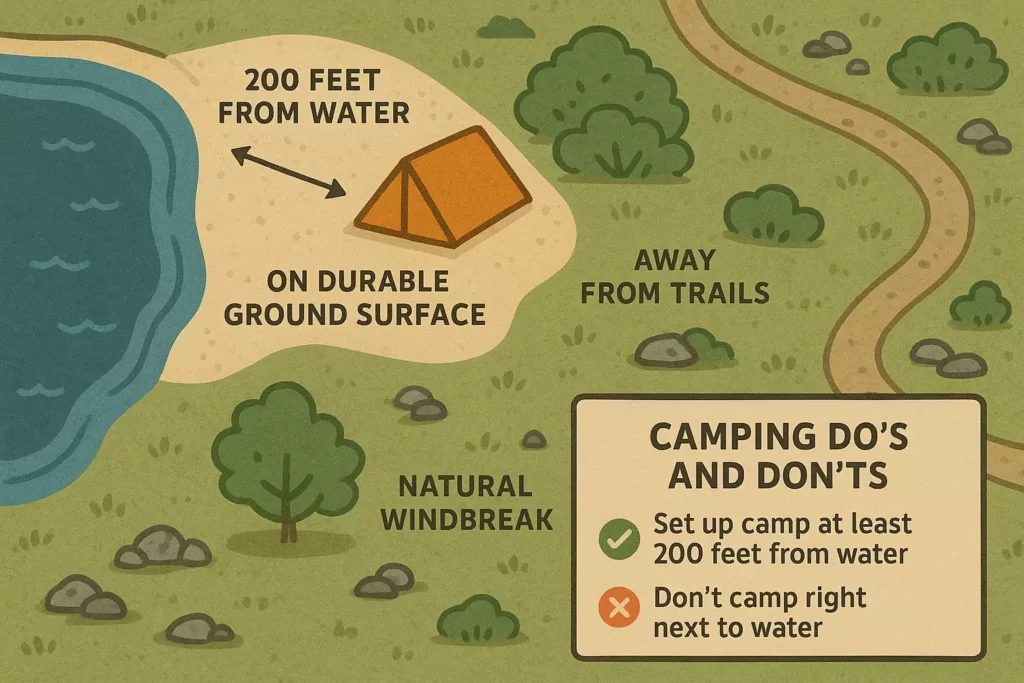
Understanding Fire Restrictions
Fire regulations change frequently based on weather conditions, season, and local fire danger levels. Always verify current restrictions before departure.
Common Restriction Levels:
- Stage 1: Campfires in designated areas only
- Stage 2: No open flames, stoves only
- Stage 3: Complete fire ban including stoves
- Seasonal closures: Area access completely prohibited
Safe Fire Practices
When fires are permitted, follow these essential safety protocols:
Fire Ring Construction:
- Use existing rings when available
- Clear area of flammable materials
- Keep water or dirt nearby for extinguishing
- Never leave fires unattended
Fuel Selection:
- Use only dead and down wood
- Gather wood away from camp
- Break wood to fit fire ring
- Never cut live vegetation
Extinguishing Procedures:
- Allow wood to burn completely to ash
- Pour water on embers and stir
- Feel for heat with back of hand
- Ensure fire is completely cold before leaving
Packing and Gear Considerations
Essential Wild Camping Equipment
Successful wild camping requires careful gear selection balancing weight, functionality, and safety. Understanding proper packing techniques ensures you carry everything needed without excess weight.
Shelter System:
- Lightweight, weather-appropriate tent
- Quality sleeping bag rated for expected temperatures
- Insulated sleeping pad
- Emergency shelter backup
Cooking Equipment:
- Reliable camp stove and fuel
- Lightweight cookware
- Water purification system
- Food storage containers
Specialized Gear for Remote Areas
Navigation Equipment:
- Detailed topographic maps
- Reliable compass
- GPS device with extra batteries
- Emergency signaling devices
Safety Equipment:
- Comprehensive first aid supplies
- Emergency shelter
- Fire starting materials
- Multi-tool or knife
Social Etiquette and Community Respect
Interacting with Other Campers
Wild camping often involves encounters with other outdoor enthusiasts. Maintaining respectful relationships preserves the experience for everyone.
Campsite Etiquette:
- Maintain appropriate distances from other camps
- Keep noise levels minimal, especially during evening and morning hours
- Respect established campsites and don’t crowd popular areas
- Share information about trail conditions and hazards
Trail Courtesy:
- Yield right of way appropriately
- Offer assistance in emergency situations
- Share knowledge about local conditions
- Maintain friendly but respectful interactions
Respecting Local Communities
Wild camping often occurs near rural communities whose residents may have mixed feelings about outdoor recreation impacts.
Community Considerations:
- Support local businesses when resupplying
- Respect private property boundaries
- Follow local customs and guidelines
- Minimize impacts on local infrastructure
Special Considerations for Family Wild Camping
Adapting Rules for Children
Camping with families requires additional planning and modified approaches to wild camping principles.
Safety Modifications:
- Choose more accessible locations with easier escape routes
- Pack extra safety equipment and supplies
- Plan shorter distances and easier terrain
- Bring engaging activities for children
Educational Opportunities:
- Teach Leave No Trace principles through hands-on activities
- Involve children in campsite selection and setup
- Create learning opportunities about local wildlife and ecology
- Encourage responsibility for personal gear and waste
Advanced Wild Camping Techniques
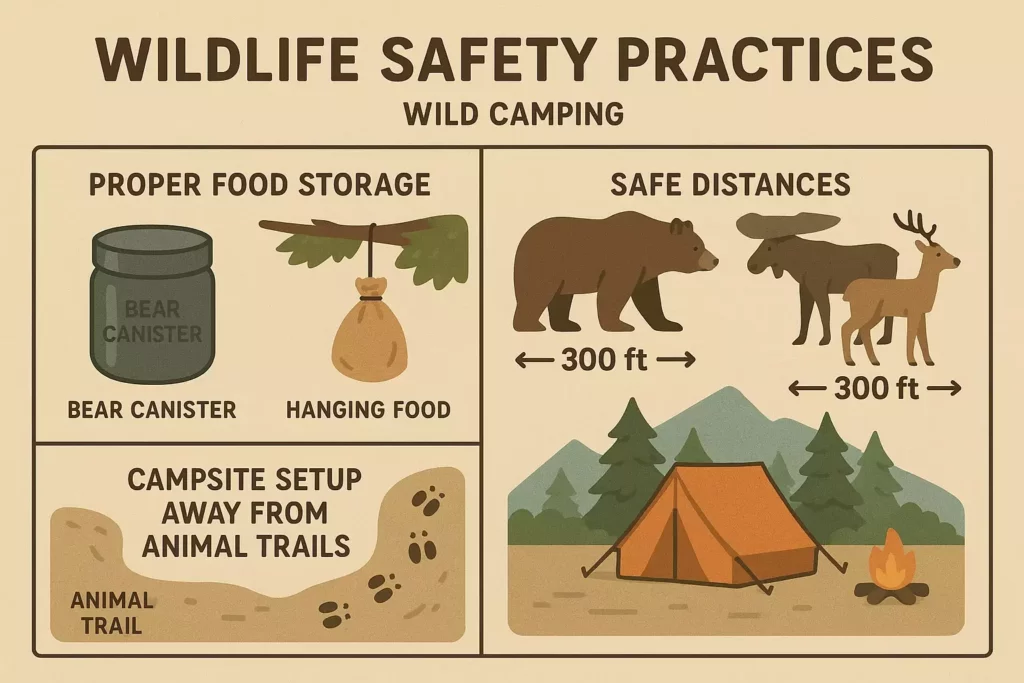
Stealth Camping
In areas where wild camping exists in legal gray areas, stealth camping techniques minimize visibility and impact.
Site Selection:
- Choose locations invisible from trails and roads
- Avoid areas with high foot traffic
- Set up late and break camp early
- Use natural features for concealment
Minimal Impact Techniques:
- Use earth-toned gear that blends with surroundings
- Avoid campfires in favor of stoves
- Minimize noise and light pollution
- Leave absolutely no trace of presence
Extended Wilderness Trips
Longer wild camping expeditions require additional planning and specialized techniques.
Resupply Strategies:
- Plan food caches in appropriate locations
- Coordinate resupply drops with reliable contacts
- Understand regulations regarding food storage
- Plan for gear replacement and repairs
Route Planning:
- Build in rest days and weather contingencies
- Plan multiple exit strategies
- Consider seasonal access changes
- Coordinate with land management agencies for extended stays
Technology and Wild Camping
Appropriate Technology Use
While wild camping emphasizes connection with nature, certain technologies enhance safety and minimize environmental impact.
Navigation Technology:
- GPS devices reduce chances of getting lost
- Offline mapping apps provide backup navigation
- Weather apps help with decision-making
- Emergency communication devices provide safety nets
Photography Ethics:
- Avoid sharing specific location details on social media
- Respect wildlife and don’t disturb for photos
- Follow Leave No Trace principles when photographing
- Consider impacts of increased visitation from shared images
Seasonal Considerations
Spring Wild Camping
Challenges:
- Unpredictable weather patterns
- Muddy trails and wet conditions
- Higher water levels in streams and rivers
- Increased insect activity
Preparations:
- Pack extra waterproof gear
- Plan for temperature fluctuations
- Bring insect protection
- Check trail and road access conditions
Summer Wild Camping
Advantages:
- Stable weather patterns
- Longer daylight hours
- Accessible high-elevation areas
- Abundant water sources
Considerations:
- Higher fire danger and restrictions
- Increased crowds in popular areas
- Heat-related safety concerns
- Thunderstorm risks in mountainous areas
Fall Wild Camping
Benefits:
- Fewer crowds and insects
- Stable weather in many regions
- Beautiful foliage and photography opportunities
- Cooler temperatures for hiking
Challenges:
- Shorter daylight hours
- Rapidly changing weather
- Hunting seasons in some areas
- Early snow at high elevations
Winter Wild Camping
Specialized Requirements:
- Advanced cold-weather gear and skills
- Understanding of avalanche and hypothermia risks
- Specialized shelter and insulation needs
- Emergency preparedness for severe conditions
Environmental Impact and Conservation
Long-term Preservation
Wild camping’s future depends on current practitioners maintaining minimal environmental impact and advocating for conservation.
Individual Responsibility:
- Follow all Leave No Trace principles consistently
- Educate others about proper wild camping etiquette
- Support conservation organizations and land protection efforts
- Participate in volunteer trail maintenance and cleanup activities
Advocacy and Education:
- Share knowledge about responsible practices
- Report violations and environmental damage
- Support policies protecting wild camping access
- Mentor new wild campers in proper techniques
Emergency Preparedness and Response
Emergency Planning
Proper emergency preparation can prevent minor issues from becoming life-threatening situations.
Communication Plans:
- Leave detailed itineraries with responsible contacts
- Establish check-in schedules for extended trips
- Carry emergency communication devices in remote areas
- Understand local emergency response procedures
Medical Preparedness:
- Carry comprehensive first aid supplies appropriate for trip length and remoteness
- Understand basic wilderness first aid techniques
- Know evacuation procedures for your area
- Consider wilderness first aid training for regular wild campers
Self-Rescue Techniques
Navigation Emergencies:
- Stay calm and avoid panic decisions
- Use multiple navigation methods to confirm location
- Follow established procedures for being lost
- Signal for help using appropriate methods
Weather Emergencies:
- Recognize signs of hypothermia and heat exhaustion
- Understand lightning safety procedures
- Know how to construct emergency shelters
- Carry emergency signaling devices
Building Wild Camping Skills
Progressive Skill Development
Wild camping skills develop over time through experience and education. Start with easier locations and gradually progress to more challenging environments.
Beginner Progression:
- Start with car camping in remote areas
- Practice Leave No Trace principles in controlled environments
- Develop gear familiarity through regular use
- Learn from experienced wild campers
Intermediate Development:
- Attempt short backpacking trips to wild camping areas
- Practice navigation and route-finding skills
- Develop weather reading abilities
- Learn advanced camping techniques
Advanced Skills:
- Master stealth camping techniques
- Develop expertise in specific environments (desert, alpine, etc.)
- Learn wilderness survival skills
- Mentor others in responsible practices
Conclusion
Understanding what are the rules for wild camping, etiquette extends far beyond simply following regulations—it represents a commitment to preserving wild spaces while experiencing nature’s profound beauty. The principles outlined in this guide form the foundation for responsible wild camping that protects both the environment and the experiences of future outdoor enthusiasts.
Key action steps for aspiring wild campers:
- Research thoroughly before every trip, understanding local regulations, weather patterns, and potential hazards
- Start small with easily accessible locations to develop skills and confidence
- Invest in quality gear that enhances safety while minimizing environmental impact
- Practice Leave No Trace principles consistently, making them second nature
- Continue learning through courses, mentorship, and hands-on experience
The future of wild camping depends on each practitioner’s commitment to these principles. By following proper etiquette and regulations, wild campers ensure these incredible experiences remain available for generations to come. Remember that every camping trip is an opportunity to deepen your connection with nature while demonstrating stewardship of our precious wild spaces.
Whether you’re planning your first wild camping adventure or refining techniques for more challenging expeditions, these guidelines provide the foundation for safe, legal, and environmentally responsible outdoor experiences. The wilderness awaits—approach it with respect, preparation, and wonder.
🏕️ Wild Camping Legality Checker
Check wild camping rules and requirements for different locations

